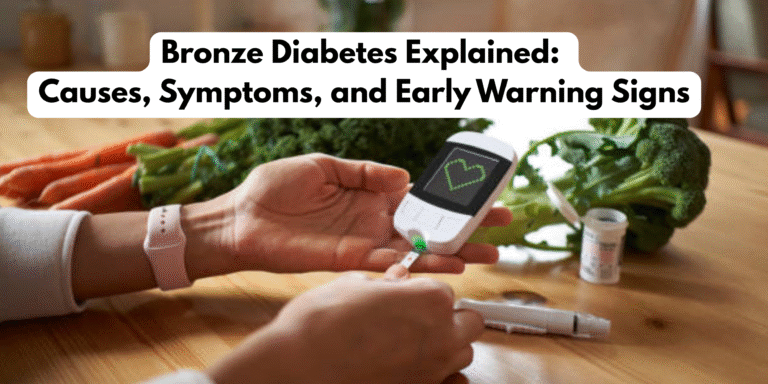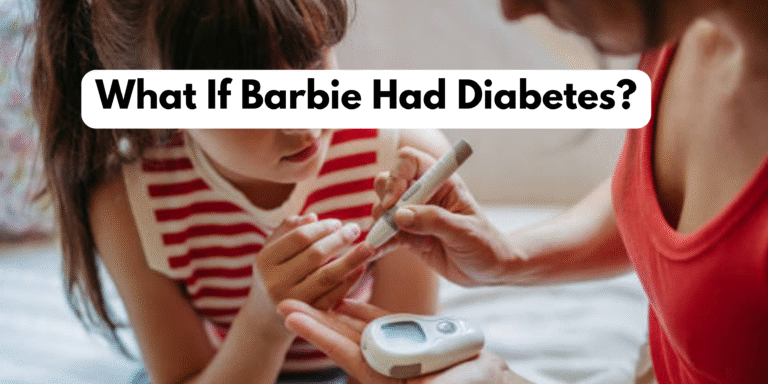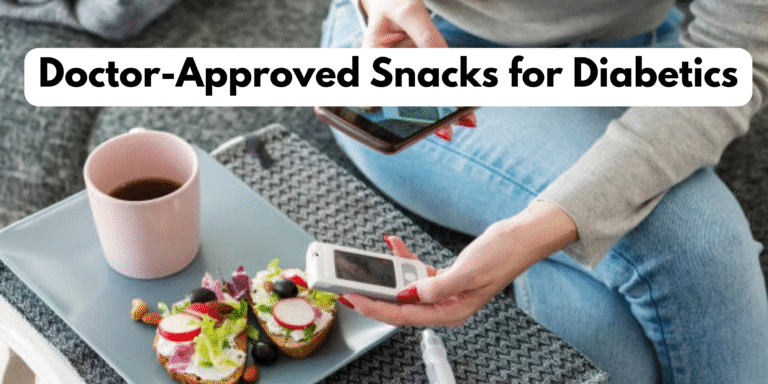How Diabetes Shows Up Differently in Women: Symptoms You Shouldn’t Ignore
How Diabetes Shows Up Differently in Women: Symptoms You Shouldn’t Ignore
Okay, sis, pull up a chair and some chai. We’re going to chat openly about Diabetes in Women: what symptoms show up differently, what to watch for, and why being vocal about your symptoms actually helps you take control of your health. This is a friendly, evidence-based, and judgment-free approach. Let’s raise your awareness.
- Women can get the classic diabetes signs (thirst, pee a lot, tired), plus some female-specific things like recurrent yeast infections, polycystic ovary–type symptoms, menopause-related blood-sugar chaos, and increased heart risk.
- Gestational diabetes is a whole vibe during pregnancy and ups the risk of later type 2 diabetes for both mama and baby. Early testing/management matters.
- Diabetes raises heart disease/stroke risk, and evidence shows women with diabetes often get hit harder than men. Don’t sleep on cardio care.
1) The basics: what diabetes usually looks like
Most diabetes symptoms are universal: increased thirst, frequent urination (especially at night), fatigue, blurry vision, slow-healing cuts, and numbness or tingling in the hands/feet. These are the original warning signs that indicate your blood sugar may be out of balance. If any of these are new and persistent, consider getting checked. Simple blood tests exist for this.
2) The “women-only” (or women-more-likely) signals you should notice
Here’s where it gets specific. Women may experience some symptoms more often or more severely than men. Heads-up:
- Recurrent yeast infections and UTIs. High blood sugar feeds yeast and bacteria, so if you’re experiencing recurring thrush or UTIs, that’s a significant concern. Don’t shrug it off.
- Sexual health changes. Vaginal dryness, less libido, pain during sex, or difficulty getting aroused can happen, especially if diabetes damages nerves or blood flow. These are real medical issues and are treatable. CDC
- Irregular periods or PCOS-like symptoms. Insulin resistance and hormonal shifts can mess with menstrual cycles, ovulation, and fertility. If your period game is off, mention it at your doc visit.
- Skin and wound stuff. Women with diabetes may notice slow-healing cuts, patches of darkened skin (acanthosis nigricans), or other skin changes. These can be subtle but significant.
3) Pregnancy and gestational diabetes: why pregnancy is a screening moment
Pregnancy naturally raises insulin resistance (that’s normal), but for some people, this tips into gestational diabetes (GDM). GDM usually emerges around 24–28 weeks, but recent research and guidelines are shifting toward earlier screening for higher-risk pregnancies. If you had GDM, you’ve got a higher chance of developing type 2 later, so follow-up matters.
If you’re pregnant or planning a pregnancy:
- Ask about early screening if you’re at high risk (family history, overweight, certain ethnicities).
- Manage carbs wisely and stay active regularly (as advised by your clinician).
- Remember: treating GDM protects both you and the baby.
4) Menopause, hormones, and glucose chaos
Menopause isn’t just mood swings and hot flashes: it changes estrogen levels and body composition, which can mess with blood sugar regulation. After menopause, some women need more meds or different dosages to keep things stable. Sleep disruptions from night sweats also make blood sugar control harder. If you’re entering perimenopause and noticing new sugar-related symptoms, bring it up.
5) The quiet but deadlier link: heart disease and women with diabetes
Straight talk: diabetes raises the risk of heart disease and stroke for everyone, but women with diabetes often have a worse cardiovascular outcome than men. Studies show the relative increase in risk is higher in women, and the historic under-recognition of women’s heart symptoms contributes to late treatment. So if you’ve got diabetes, your heart isn’t off-duty — treat it like the VIP it is.
Actionable cardiac checklist:
- Blood pressure and cholesterol checks are regularly performed.
- Discuss statins, aspirin, or other cardiovascular prevention options with your doctor if they are recommended.
- Move your body: even walking 30 minutes most days helps.
- Quitting smoking is the biggest single modality to reduce risk.
6) Mental health: not a side quest
Anxiety, depression, and diabetes distress are real and common. Managing glucose 24/7 is exhausting; mood and motivation affect self-care and blood sugar, and vice versa. Women report higher levels of diabetes-related distress in many studies, so mental health care is part of diabetes care, not optional.
If you’re feeling overwhelmed, have hot tears, or experience constant anxiety about managing diabetes, ask for mental health support or join a peer group. Therapy and diabetes educator support are actually a power move.
7) When to get tested: don’t wait for chaos
Get a fasting glucose, HbA1c, or oral glucose tolerance test if you have:
- Classic symptoms (thirst, pee, fatigue).
- Recurrent yeast infections or UTIs.
- Irregular cycles, PCOS, or planning pregnancy.
- Family history of diabetes, overweight, or high blood pressure.
- Age-related risk or ethnic background is associated with a higher prevalence.
For pregnant individuals, routine screening is generally conducted between 24 and 28 weeks, and earlier if there is a high risk.
8) What you can do right now: small moves, big vibe
You don’t need to overhaul your life overnight. Real wins come from tiny, consistent changes:
- Move daily. Walking, dancing, or chasing your dog’s movement helps insulin work more effectively.
- Eating balanced food is hot. Whole grains, protein at meals, veggies, and mindful portions beat crash diets.
- Sleep & stress management. Sleep hygiene and breathing/meditation actually change hormones.
- Keep routine checks. Annual A1c, BP, cholesterol, kidney labs, eye checks, and prevention are flexible AF.
- Bring receipts to appointments. Track your symptoms, medications, cycles, and any unusual occurrences to share with your clinician. It helps them help you.
9) Treatment basics (so you know the lingo)
- Lifestyle first: diet, exercise, sleep, and stress.
- Medications: metformin is common for type 2; insulin for type 1 and sometimes type 2 or gestational diabetes. Your doctor may add other medications to help protect your weight, heart, or kidneys.
- Team care: endocrinologist, GP, OB/GYN (for pregnant or reproductive issues), cardiologist (if heart risks), diabetes educator, and mental health pro. Multi-player energy wins.
10) Mythbusting: quick facts
- Myth: “Only overweight people get diabetes.” Nope. Weight is a factor, but genetics, ethnicity, and other health issues also play a role.
- Myth: “Diabetes is always obvious.” Nope, many people have no symptoms or very subtle ones. Screening is important.
- Myth: “If you have diabetes, you can’t have babies.” Nope. With care, many people with diabetes have healthy pregnancies. Early planning + monitoring is key.
11) When it’s urgent: red flags
Seek urgent care if you have:
- Confusion, difficulty breathing, vomiting that won’t stop, or severe abdominal pain.
- Very high blood sugar symptoms (extreme thirst, very frequent urination, dry mouth) with dizziness or fainting.
- Signs of infection that spread quickly (red streaks, high fever).
These could signal diabetic ketoacidosis (more common in type 1) or severe infections; it’s not the time to “wait it out.”
Sources & why they matter
This guide draws from trusted public health and clinical sources (NHS, CDC, American Diabetes Association, Cleveland Clinic, peer-reviewed research) to provide you with accurate and usable information. If you want the nerd receipts, I’ve pulled the top references while writing this.
Final real talk
“Diabetes in Women” isn’t a one-size thing. It’s messy, hormonal, mood-influenced, and deeply personal. But knowing the female-specific signs of yeast infections, menstrual issues, pregnancy-related risk, menopause, blood-sugar shifts, and heightened heart risk gives you the power to act earlier and smarter.
If anything in this article resonates, don’t dismiss it: book a blood test or consult with a healthcare professional. Knowledge is a glow-up energy, and your health is always worth prioritising.
Would you like me to write a one-page handout for you to take to a clinic, or a short caption for Instagram about “5 Signs of Diabetes in Women”? I got you to say the word, and I’ll make it snappy.





